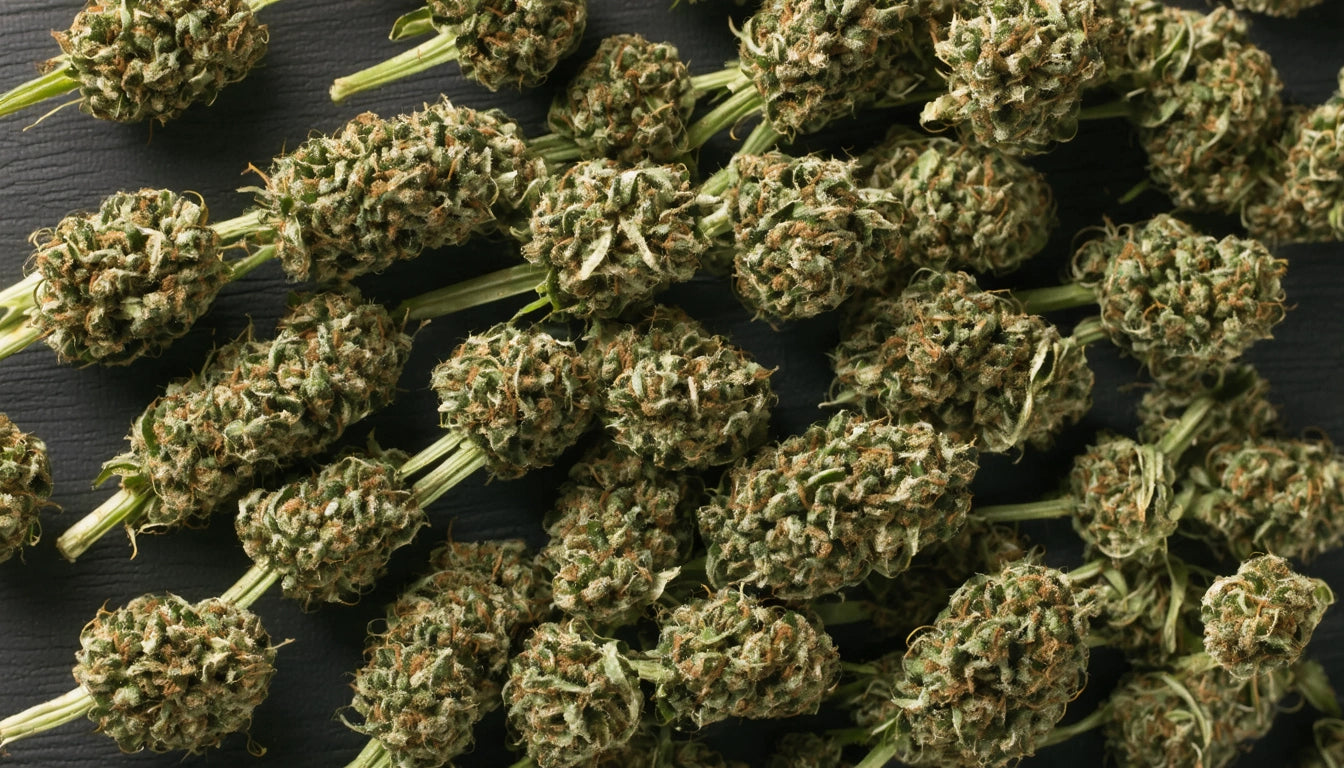Table of Contents
Few cannabis strains have achieved the iconic status and lasting impact of White Widow. Since its emergence in the Netherlands during the 1990s, this balanced hybrid has maintained its reputation as a cornerstone of cannabis culture. Known for its distinctive white crystal appearance and harmonious effects, White Widow continues to influence breeding programs and serve as a benchmark for hybrid strains worldwide.
White Widow Origins and Genetic Lineage
White Widow was created by Dutch breeder Shantibaba (Scott Blakey) at Green House Seeds in the mid-1990s. The strain is a balanced hybrid cross between a Brazilian sativa landrace and a South Indian indica. This genetic combination produced a plant with exceptional resin production, moderate growing difficulty, and balanced effects that would go on to win the High Times Cannabis Cup in 1995.
The strain's genetic influence can be seen in many modern varieties. Similar to how Girl Scout Cookies spawned numerous descendants, White Widow has parented notable strains including White Russian, Blue Widow, and White Rhino. Its genetic stability has made it a favorite among breeders looking to enhance trichome production in new hybrids.
Appearance, Terpenes, and Aroma Profile
True to its name, White Widow is characterized by dense, resin-coated buds that appear almost white due to their thick trichome coverage. The contrast between the frosty crystals and dark green foliage makes this strain instantly recognizable. When properly stored in high-quality storage solutions like mylar bags, White Widow's distinctive appearance and potency can be preserved for extended periods.
The terpene profile of White Widow features:
- Pinene: Providing pine and fresh forest notes
- Myrcene: Contributing earthy, musky undertones
- Caryophyllene: Adding spicy, peppery elements
This combination creates White Widow's characteristic earthy, woody aroma with hints of spice and sweetness. While not as fruity as Blue Dream or as citrus-forward as Tangie, White Widow's complex aroma has maintained its appeal through generations of cannabis consumers.
Effects and Medicinal Applications
White Widow is celebrated for its balanced hybrid effects that combine:
- Cerebral stimulation and creativity enhancement
- Moderate body relaxation without heavy sedation
- Mood elevation and social energy
- Manageable potency (typically 18-25% THC)
This balance makes White Widow versatile for different use cases. Unlike heavily indica-dominant strains such as Skywalker OG, White Widow rarely causes couch-lock, making it suitable for daytime or evening use. Its effects profile shares similarities with other balanced classics like MAC, though with a distinctive character all its own.
Medicinally, White Widow is commonly used for:
- Stress and anxiety management
- Mild to moderate pain relief
- Mood disorders and depression
- Social anxiety and creative blocks
Growing Characteristics and Cultivation Tips
White Widow has remained popular among growers for its resilience and relatively forgiving nature. The strain typically:
- Flowers in 8-9 weeks
- Produces moderate to high yields
- Demonstrates good resistance to mold and pests
- Adapts well to various growing methods
Indoor cultivation allows for better control of White Widow's environment, typically resulting in higher resin production. Outdoor growing is successful in Mediterranean-like climates with harvests usually occurring in late October in the Northern Hemisphere.
Compared to more challenging strains like GMO, White Widow offers a good balance of quality results and cultivation ease, making it approachable for growers with intermediate experience.
White Widow's Legacy in the Modern Cannabis Market
Despite being nearly three decades old, White Widow remains relevant in today's cannabis landscape. While newer strains like Runtz and Gelato variants dominate much of the current market conversation, White Widow maintains its position as a standard-bearer for balanced hybrids.
The strain's enduring popularity can be attributed to several factors:
- Consistent effects and reliable genetics
- Historical significance and name recognition
- Versatility for different consumption preferences
- Widespread availability across global markets
For consumers and collectors, White Widow represents cannabis heritage. While contemporary offerings may feature higher THC percentages or more exotic terpene profiles, White Widow's balanced character and historical significance ensure its continued relevance in cannabis culture.











Leave a comment
All comments are moderated before being published.
This site is protected by hCaptcha and the hCaptcha Privacy Policy and Terms of Service apply.